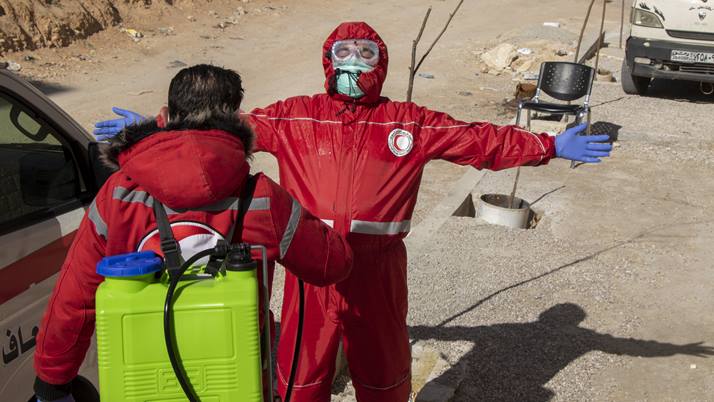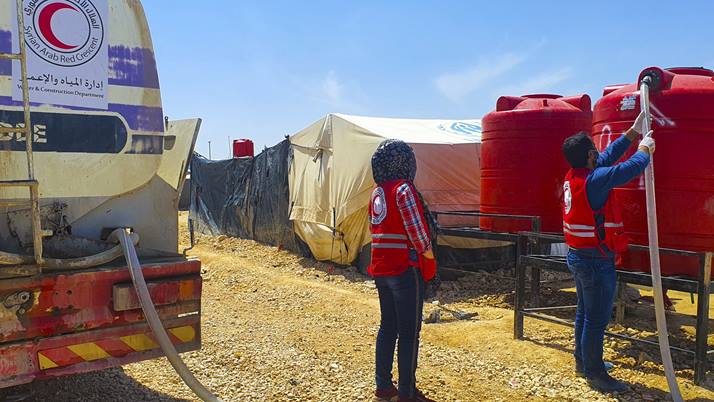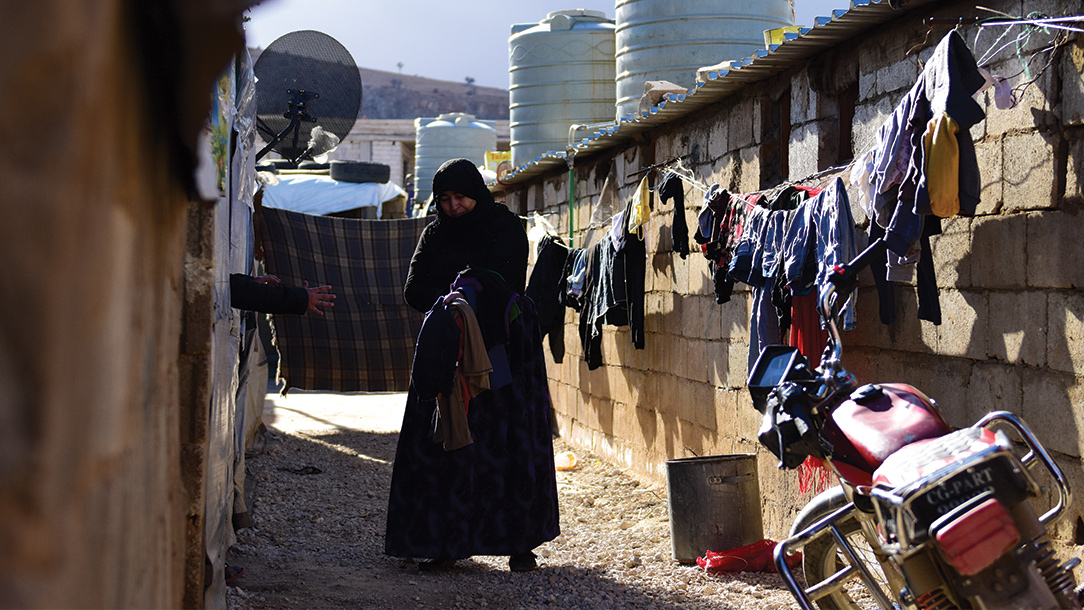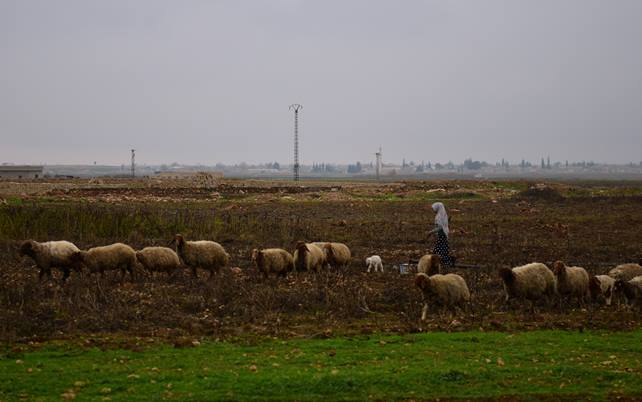The conflict continues in Syria: what can be done?
Millions have fled violence over the last nine years of conflict in Syria. Today, millions are in need of humanitarian aid. This is a short explainer on the conflict, and the impact coronavirus could have on the country
Last updated 4 August 2023
What is the current situation?
For almost a decade, the suffering of Syria’s people has been in the news. Millions have fled the country, and half a million people have died. The situation has seemed helpless, and the arrival of coronavirus in 2020 has made an unimaginably difficult situation even worse.
The coronavirus pandemic presents a major threat to life in stable countries with robust healthcare systems: in a place where resources like clean water and soap are in short supply, it could be catastrophic. It is not just the virus itself that poses a threat. In Syria, unemployment is above 50 per cent and the price of bread has doubled in a country where 80 per cent of people live on just £1 per day. Where food is concerned, 50 per cent of people will go to bed hungry.
Without humanitarian aid, millions of Syrians - young and old, women and men, people who have already had to flee the conflict up to ten times - will continue to suffer.
An estimated 100,000 people live in camps across North East Syria alone. In these camps, social distancing is virtually impossible, with cramped conditions meaning that people have a much greater risk of catching the virus.
With support from the British Red Cross and the Red Cross Movement, thousands of staff and volunteers from Red Cross partners the Syrian Arab Red Crescent have been trained to respond to the outbreak and can continue to reach thousands of people with food, water and healthcare. Donations to our global coronavirus appeal will help us keep more people safe from the virus.

The Syrian Arab Red Crescent has launched a nationwide disinfection campaign to prevent the spread of the virus
Credit: IFRC/British Red Cross
How did the crisis begin?
The Syria crisis is one of the largest and most complex humanitarian crises in the world, with a staggering 11.1 million people in need of aid as conflict carries on.
Today, there are dozens of state and non-state actors involved in the fighting – making it difficult to understand what is going on.
The crisis began in 2011 when waves of pro-democracy protests were underway across large parts of the Middle East, known as the Arab Spring.
Protests began in Syria and, by July 2011, armed resistance groups had formed. Before long, Syria had descended into a civil war that continues to this day.

The Syrian Arab Red Crescent work to address water shortages in the country
Credit: ICRC/British Red Cross
What was Syria like before?
Syria has an incredibly rich history and culture. It has played a crucial role in thousands of years of ancient history, from Greek and Roman times to the medieval period and the Ottoman Empire.
Before the crisis, over 21 million people lived in Syria. More than 60 per cent lived in urban areas, and many were old cities that were also home to countless mosques and souks – among them six UNESCO World Heritage Sites.
All six sites are now either destroyed or severely damaged. One site, Palmyra’s 2,000-year-old Arch of Triumph, was destroyed after armed groups took control of the area in 2015. Many other cultural and heritage sites have been shelled during the conflict.
The agricultural sector was also strong before the war, with people farming wheat, sheep, vegetables, olives and many other crops. Until the conflict took hold, Syria produced enough food for its people. However, a serious drought that began several years before the conflict spurred people to move to cities, adding to the serious difficulties farmers now face because of the fighting.

Thousands of Syrian refugees live in the Lebanese town of Arsal, close to the border. They often live in makeshift homes constructed from concrete blocks, corrugated iron and tarpaulin and are severely vulnerable
What needs to happen?
Today, the situation in Syria remains complex.
Fighting is concentrated in the north-west of the country around Idlib province.
Idlib is home to around three million people, half of whom were transferred there from other parts of Syria.
Since December 2019, more than 900,000 people have been forced to flee from deadly violence – the single largest displacement since the conflict began.
Weeks of intense violence have emptied entire towns in the north-west Idlib province and sent huge numbers of civilians fleeing north towards the Turkish border.
Today, there are just over 17.3 million people left in Syria: around three to four million people have fled the country and around 570,000 have been killed over the past decade. Outside of Idlib, active fighting has largely ended but the situation remains dire. More than eight out of ten people - 83 per cent - live beneath the poverty line, unable to meet their basic needs.
This is why the pandemic could be so dangerous. Half of all healthcare facilities in Syria are either out of service or only partially operating. Up to 70 per cent of healthcare workers have fled the country and in a population of over 16 million, there are just 325 intensive care beds. Personal protective equipment for the staff that remain is in short supply. And preventative measures such as hand-washing and social-distancing are difficult or impossible in the cramped displacement camps where an estimated 6.5 million people now live.
In total, an estimated 11.1m people still need humanitarian assistance inside the country. That’s over two million more than the population of London.

A small farm in rural Aleppo, where a family is growing crops to generate an income after receiving livelihoods support from British Red Cross partners the Syrian Arab Red Crescent
The Red Cross and Red Crescent Movement reaches more communities in Syria than any other organisation. Over six million people have directly benefited from our help.
Together, since the conflict began, we have provided 580,000 food items and distributed over 1.6 million other items, such as blankets and mattresses.
With the arrival of coronavirus, there is more work to do. Thousands of people could be kept safe with simple measures like hygiene education and the delivery of food parcels, soap and clean water. Together, we can help people keep themselves safe in a country that has been through so much already.
Donate to our Global Coronavirus Appeal
Coronavirus is spreading in the world's most vulnerable communities, with the safety of millions at stake. Please help the Red Cross continue our vital work and help the most vulnerable people in society.
DONATE